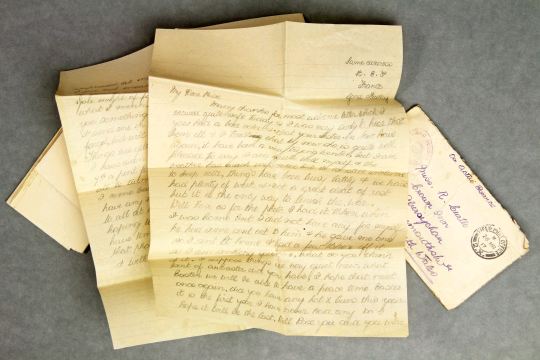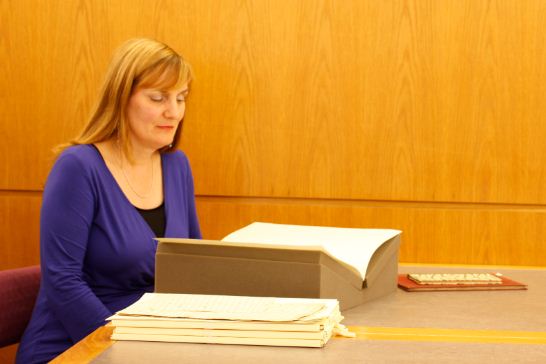Last month I posted a blog about Accessions to Repositories, our annual survey which collects information from archive services around the UK and Ireland about their brand new archive collections.
I’m delighted to announce that the results of the survey are now available to consult on our Accessions website.
We’ve had a record response from archive services this year, with more than 300 taking part. This includes a number of services which have participated in the survey for the first time, including the the Marylebone Cricket Club Library, the Wallace Collection and the National Fairground Archive, so we’re super-pleased with the turn out!
More archive services taking part = more collections being reported, which means there will be even more archives for you to discover.
How do I find out about these new collections?
You can use the website to browse through new collections received by different archives in a number of ways.
- Browse by topic – we’ve created a list of 38 subject areas, including Politics, Architecture, Military History and more
- Browse by archive service A-Z – we surveyed a wide range of services, including local archives, libraries, universities, national institutions and specialist repositories
- Browse by year – you can also find out what collections archives accessioned in previous years too
A large number of collections listed as part of the survey will need to be catalogued before they can be made available for your consultation, so do check with the relevant archive service in advance (contact details will be available through Find an Archive) to ascertain whether this, or any other factors, may affect access. After cataloguing, more information about the collections may surface, so check Discovery to see if more updated information is available.
What sort of collections will I discover?

New archive collections at the National Maritime Museum, from the Accessions to Repositories 2014 survey
Archive collections of poets, politicians, Women’s Institutes, sports clubs, businesses – the list is endless! What we’ve been particularly delighted to see reported this year is the wide range of collections relating to the First World War. For more information about these accessions, you can consult our WW1 digest but in the meantime, we’ll leave you with one of our First World War collection highlights from Wales.
Collection Highlight: First World War correspondence of Private William O’Brien of Abersychan
Last year Gwent Archives received a large donation of First World War correspondence and photographs, detailing the romance of Rose Nash (nee Curtis) and her then boyfriend Private William O’Brien.
Originally from Newport, we know that in 1914 William became the local police constable for Abersychan, which is where he met Rose. A year later, William joined the Grenadier Guards to fight for his country. After leaving Wales, William began writing to Rose regularly. The letters document his entire journey to the Front; we therefore know that he was first based in Caterham in Surrey, and Chelsea Barracks in London, before finally being sent to France in the summer of 1916.

‘My Dear Rose’: One of Private William O’Brien’s letters to Rose Curtis, 1917. William O’Brien Collection, Gwent Archives (collection reference: D5963) – Image courtesy of Gwent Archives
Apart from being a love story, the collection also provides researchers a personal commentary on life during the First World War, both in south Wales as well as on the Western Front. In his letters, William comments on such incidents as Zeppelin attacks over London and, as you may expect, the discomfort of life in the trenches. William’s longing for home is most apparent in a very sweet note sent at Easter time to Rose: ‘Did you have any hot cross buns this year? It is the first year I have never had any so I hope it will be the last.’
And it was, sadly, to be his last. From a poignant letter sent from William’s mother, we know that on 4 August 1917, William was killed after the Battle of Pilckem Ridge. She writes: ‘You know, he was such a mother’s boy, I feel broken hearted.’
Kerry Evans, archivist at Gwent Archives, has enjoyed the opportunity of working with such a moving collection, and has felt privileged in cataloguing the papers in order to make them accessible to the public: ‘The letters are full of humanity, with much evidence of the expected anxiety a young man separated from his sweetheart would feel.’ Through the cataloguing process, Kerry has managed to discover that whilst serving in the police force William became friends with Jack Nash, who was initially posted to Pontypool Police Station. When William joined the army, Jack replaced William as the local constable. During his time away, William wrote to Jack many times, and mentioned him in his letters to Rose. Just like William, Jack became a frequenter of the Crown Inn, where Rose lived, and got to know Rose. Eventually, after the sad death of William, Rose and Jack become a couple, and married in the autumn of 1920. Rose lived into her 80s, and kept the letters for the rest of her life.
What stories will your search of new accessions uncover?

